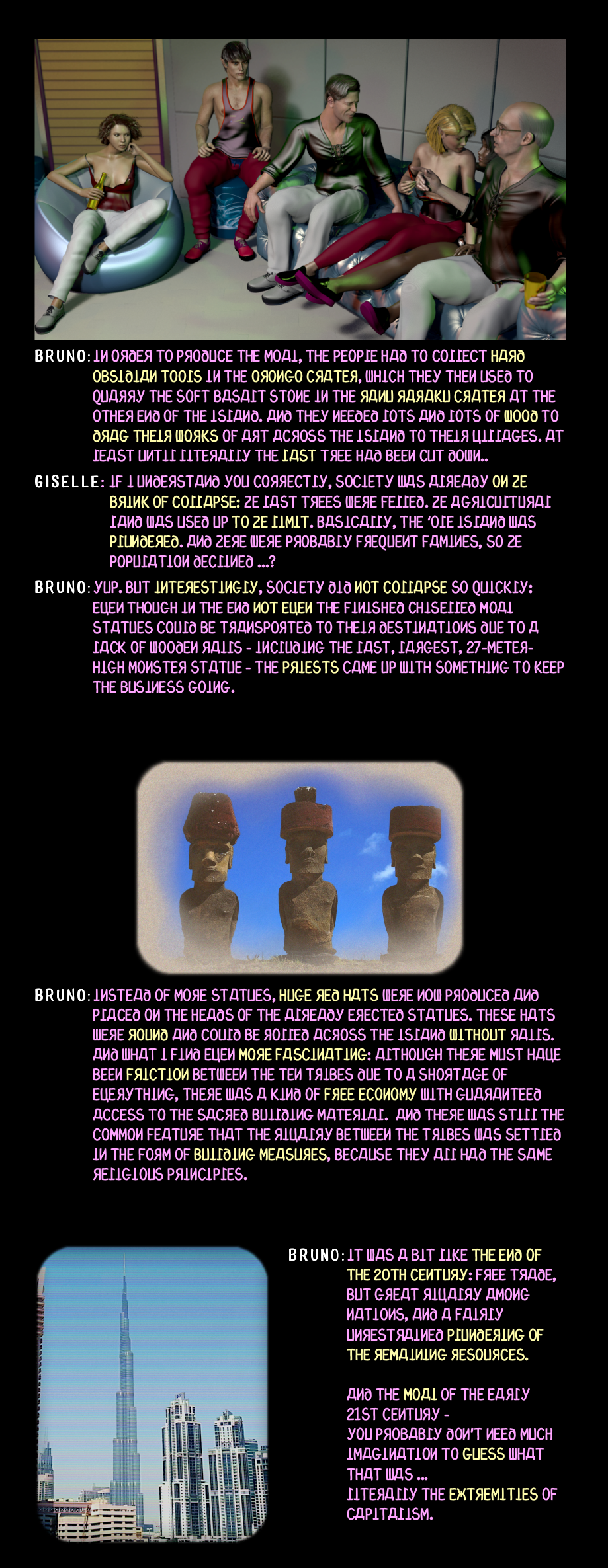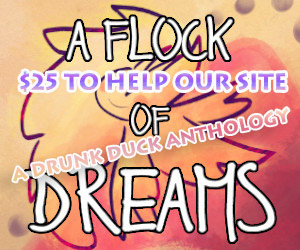Ch6-47
Othosmops on Feb. 20, 2025
(russian):
Panel 1:
BRUNO: In order to produce the moai, the people had to collect hard obsidian tools in the Orongo Crater, which they then used to quarry the soft basalt stone in the Ranu Raraku Crater at the other end of the island. And they needed lots and lots of wood to drag their works of art across the island to their villages. At least until literally the last tree had been cut down..
GISELLE: If I understand you correctly, society was already on ze brink of collapse: ze last trees were felled. ze agricultural land was used up to ze limit. Basically, the ‘ole island was plundered. And zere were probably frequent famines, so ze population declined …?
BRUNO: Yup. But Interestingly, society did not collapse so quickly: even though in the end not even the finished chiselled Moai statues could be transported to their destinations due to a lack of wooden rails - including the last, largest, 27-meter-high monster statue - the priests came up with something to keep the business going.
Panel 2:
BRUNO: Instead of more statues, huge red hats were now produced and placed on the heads of the already erected statues. These hats were round and could be rolled across the island without rails.
And what I find even more fascinating: although there must have been friction between the ten tribes due to a shortage of everything, there was a kind of free economy with guaranteed access to the sacred building material. And there was still the common feature that the rivalry between the tribes was settled in the form of building measures, because they all had the same religious principles.
Panel 3:
BRUNO: It was a bit like the end of the 20th century: Free trade, but great rivalry among nations, and a fairly unrestrained plundering of the remaining resources.
And the Moai of the early 21st century -
you probably don't need much imagination to guess what that was …
literally the extremities of capitalism.










Ender mBind at 7:02AM, Feb. 20, 2025
Very realistic to see a scientifically debunked theory being presented as valid decades after it has been debunked. Next up he could start about alpha pairs in wolf behavior or claim spinach is very high in iron content compared to other vegetables. People seem to prefer the good narrative over the good science.
Ender mBind at 7:45AM, Feb. 21, 2025
The debunking in short: The island never been a Hawaii or Tahiti - but more comparable to, say, the Falkland Islands: quite barren to begin with. The whole "explanation" of the theory tries to explain a natural state that needs no dramatic story to be explained. The statues were no big drain on any forests, nor did that cause any climate change. Some islands just don't have much trees to start with (Iceland is another example) - if only because of the question: how would trees ever get there? What did happen was severe internal strife and Europeans taking advantage and slaves - no eco story, just the same old same old.
Othosmops at 10:10AM, Feb. 20, 2025
Bruno already commented on the “debunking” of this theory at the beginning of his speech, and as far as I know their arguments, it only brought innovations in unimportant places, which also stand on pretty shaky ground. It mainly served to redeem the image of the natives of the island - which is not at all necessary, because they behaved the way humans behave. The main arguments of the "debunkers", on the other hand, are so thoroughly covered in the "debunked" theory that when I read the "rebuttal" I got the impression that they either didn't properly study or didn't understand the theory they were disputing.
bravo1102 at 12:19AM, Feb. 20, 2025
The moai walked to their positions. Everybody knows that. The trees on the island were too soft to support the statues. They would have been squashed by the weight and nothing would have rolled. The point is a valid one about unrestrained use of resources.
Othosmops at 5:03AM, Feb. 20, 2025
And then there were those Moaï who never made it to their platform because they fell down or never got up, presumably because they didn't grow legs.